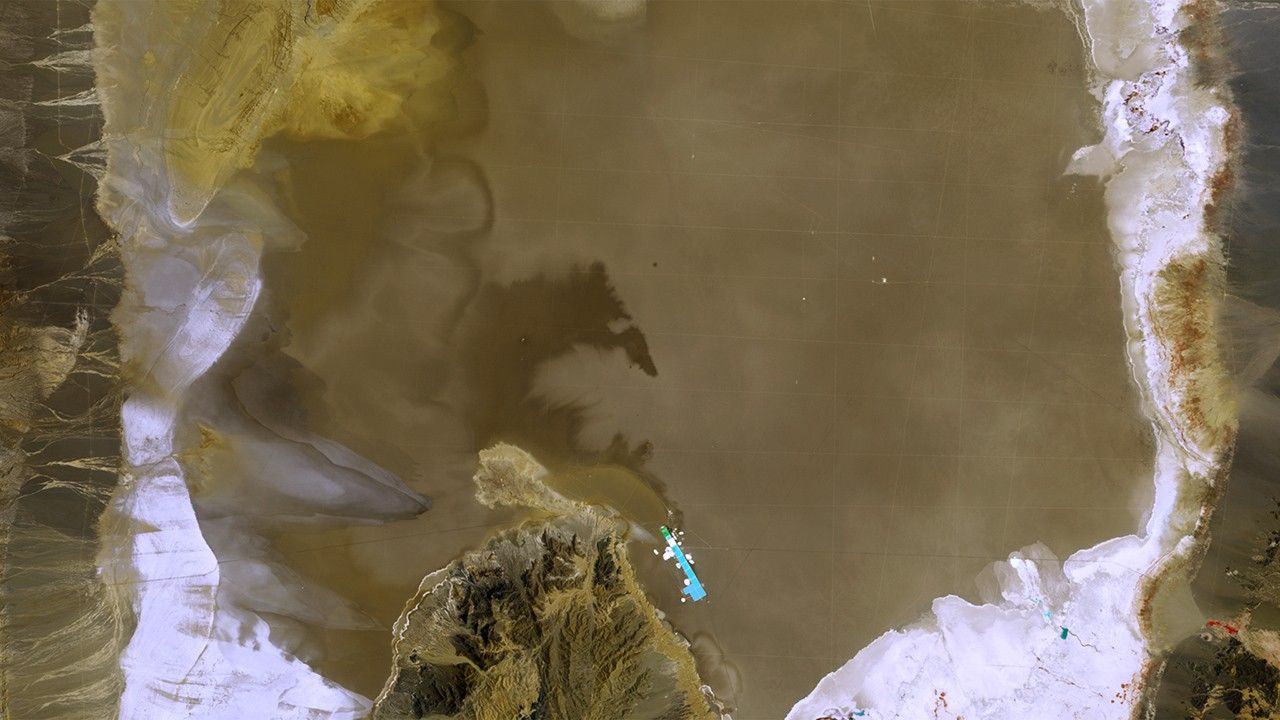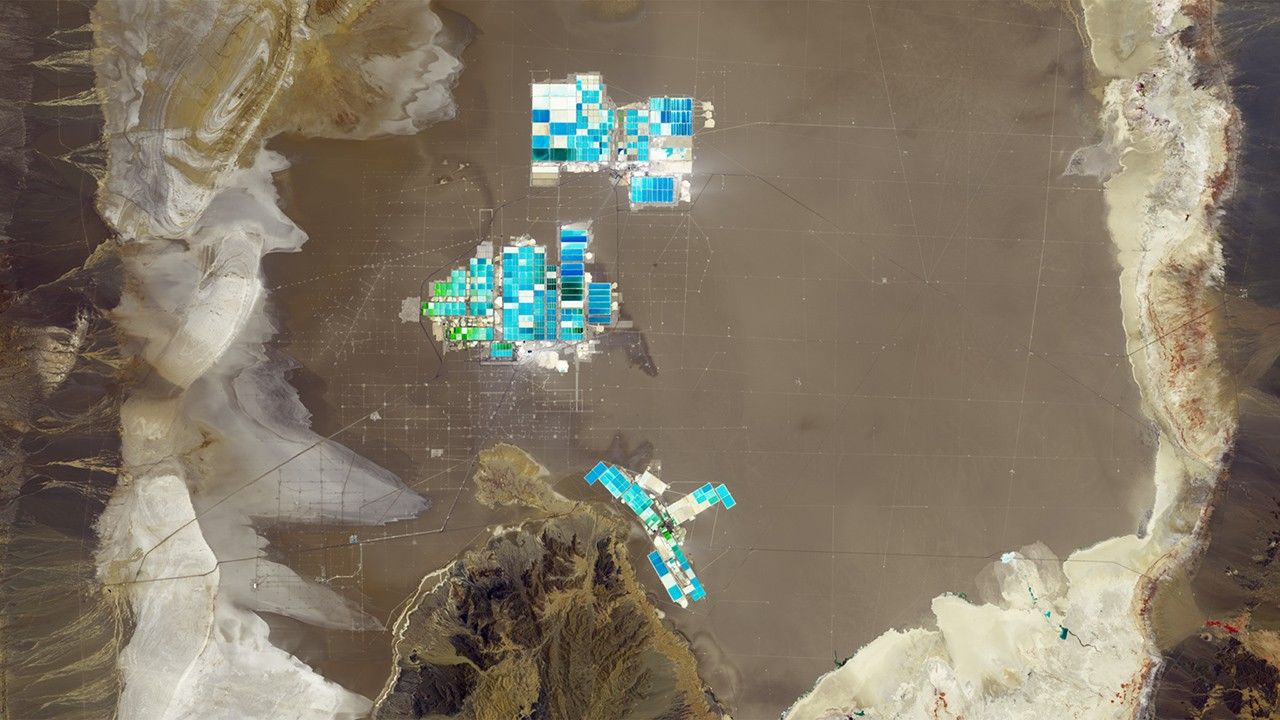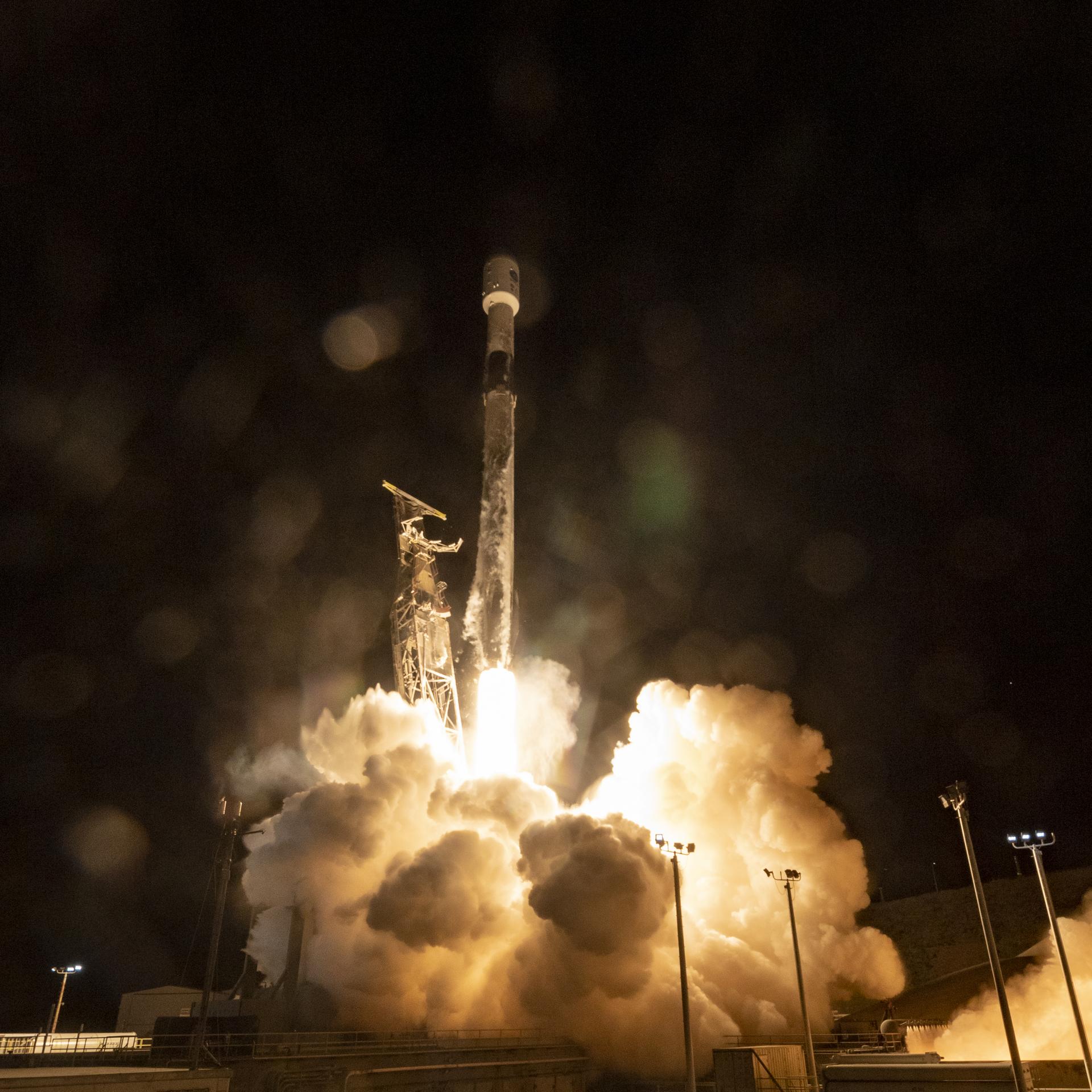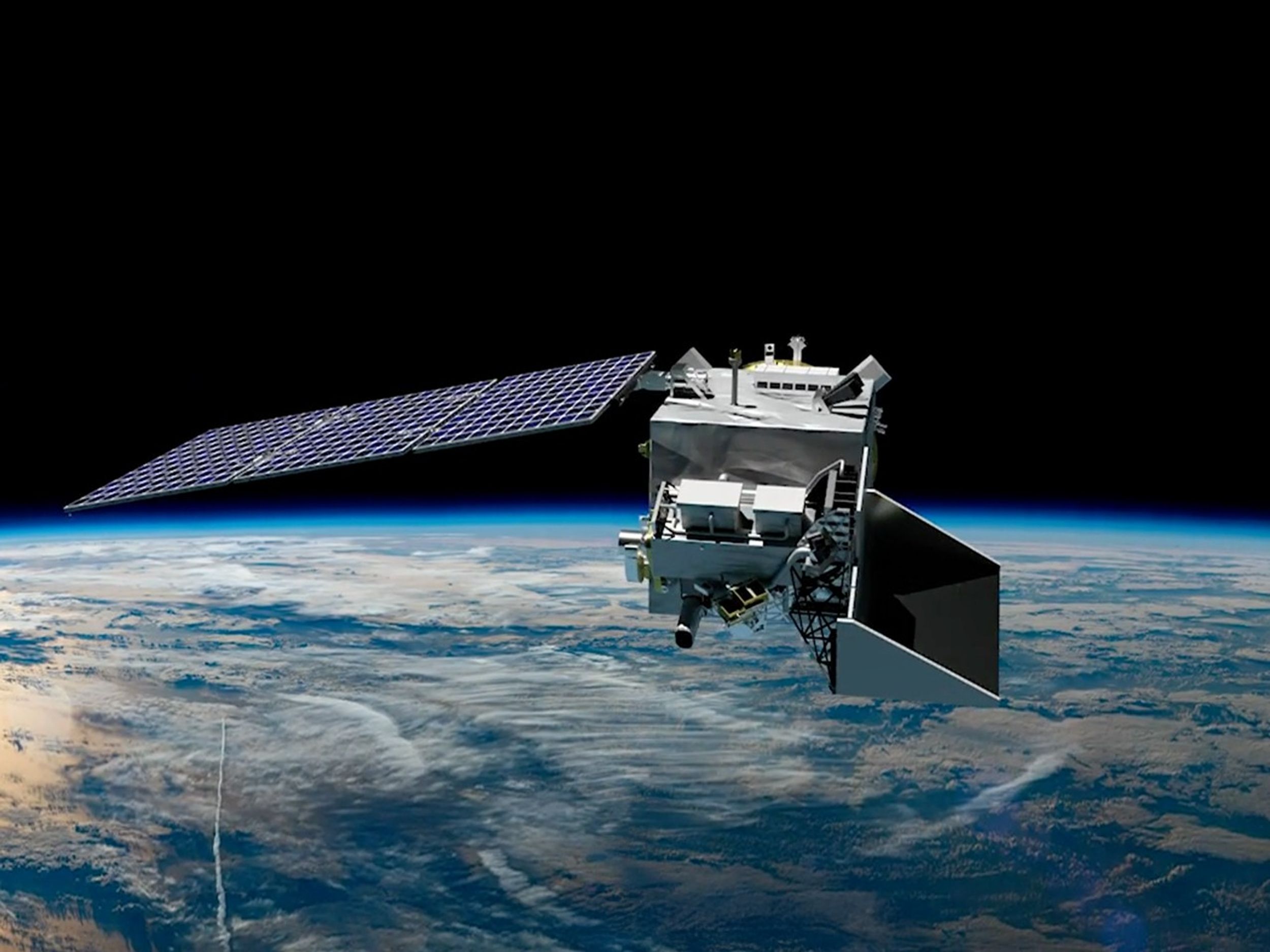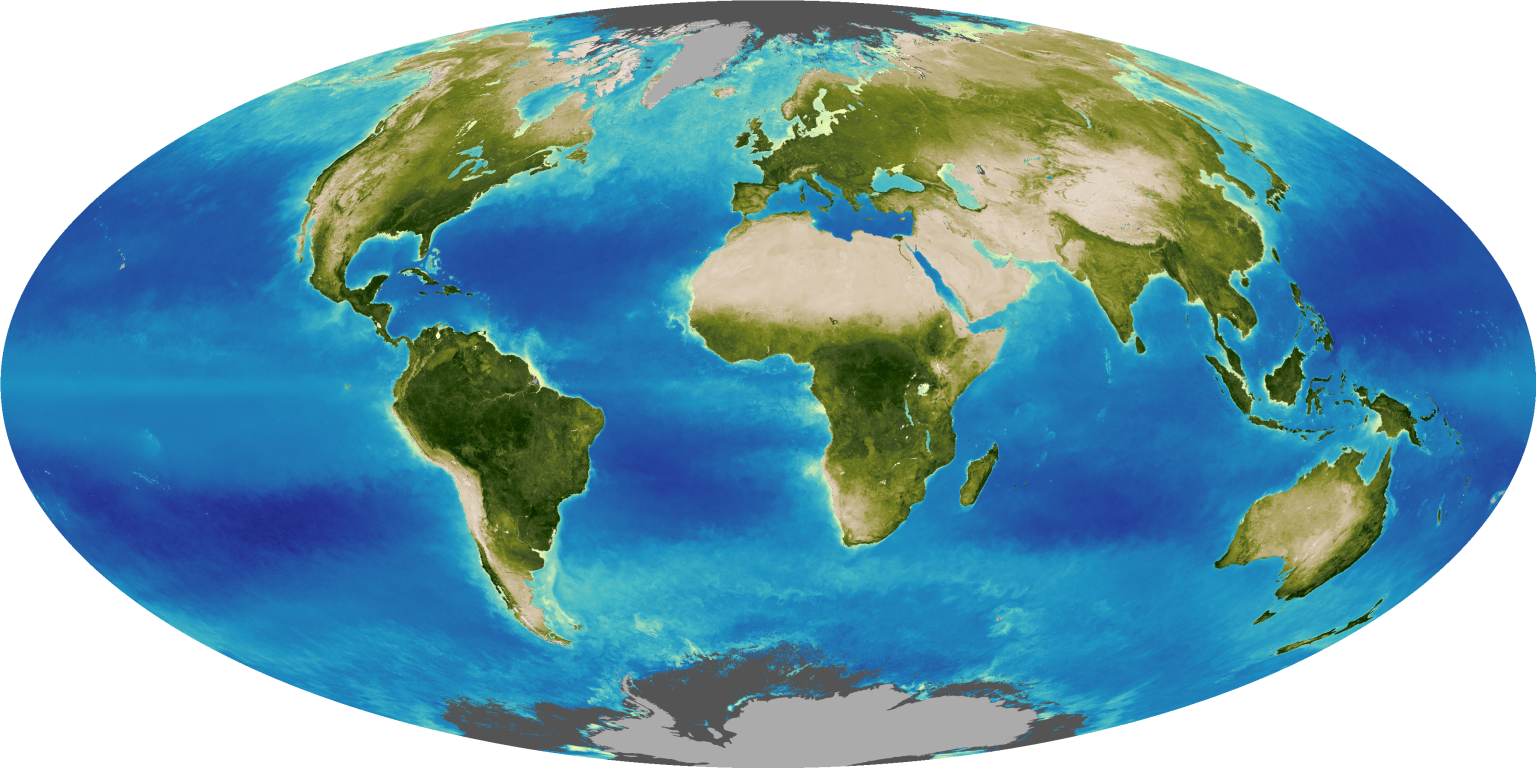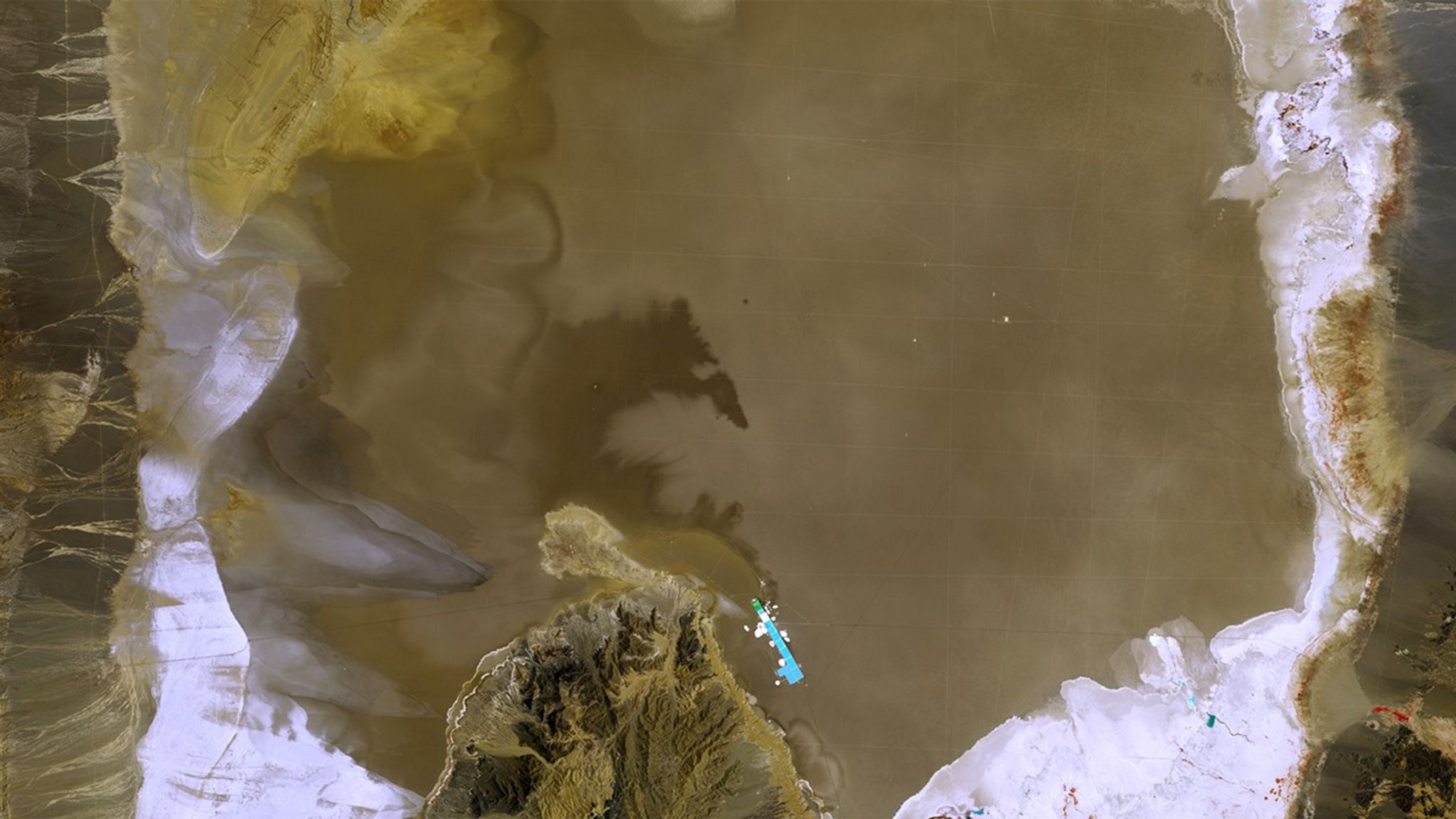
Lithium is a key ingredient in many rechargeable batteries and Chile’s Atacama Desert contains the world’s largest deposit of lithium that is economically practical to recover. Miners retrieve it by pumping lithium-rich brine from underground to evaporation ponds on the surface, where the lithium salts dry out. These images show the increase in evaporation ponds from 1991 to 2018. The lighter the shade of blue, the greater the concentration of lithium salts in the pond. 1991 image taken by Landsat 5. 2018 image taken by Landsat 8. Source: U.S. Geological Survey’s Land Remote Sensing Image Collections.
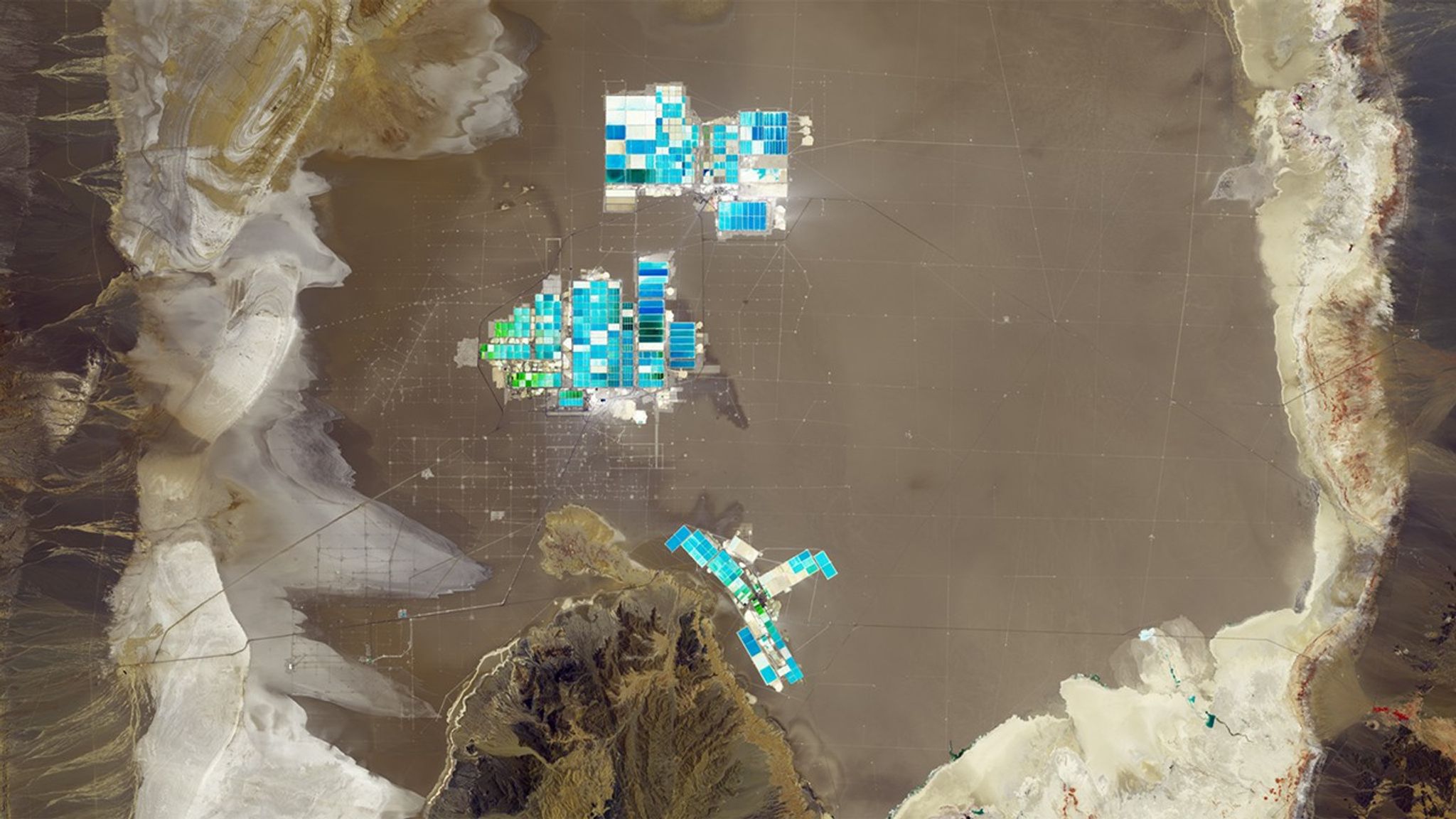
Lithium is a key ingredient in many rechargeable batteries and Chile’s Atacama Desert contains the world’s largest deposit of lithium that is economically practical to recover. Miners retrieve it by pumping lithium-rich brine from underground to evaporation ponds on the surface, where the lithium salts dry out. These images show the increase in evaporation ponds from 1991 to 2018. The lighter the shade of blue, the greater the concentration of lithium salts in the pond. 1991 image taken by Landsat 5. 2018 image taken by Landsat 8. Source: U.S. Geological Survey’s Land Remote Sensing Image Collections.

Lithium is a key ingredient in many rechargeable batteries and Chile’s Atacama Desert contains the world’s largest deposit of lithium that is economically practical to recover. Miners retrieve it by pumping lithium-rich brine from underground to evaporation ponds on the surface, where the lithium salts dry out. These images show the increase in evaporation ponds from 1991 to 2018. The lighter the shade of blue, the greater the concentration of lithium salts in the pond. 1991 image taken by Landsat 5. 2018 image taken by Landsat 8. Source: U.S. Geological Survey’s Land Remote Sensing Image Collections.

Lithium is a key ingredient in many rechargeable batteries and Chile’s Atacama Desert contains the world’s largest deposit of lithium that is economically practical to recover. Miners retrieve it by pumping lithium-rich brine from underground to evaporation ponds on the surface, where the lithium salts dry out. These images show the increase in evaporation ponds from 1991 to 2018. The lighter the shade of blue, the greater the concentration of lithium salts in the pond. 1991 image taken by Landsat 5. 2018 image taken by Landsat 8. Source: U.S. Geological Survey’s Land Remote Sensing Image Collections.
before
after
Before and After
Lithium mining in Chile’s Atacama Desert
Dec. 28, 1991 - Jan. 4, 2018
Lithium is a key ingredient in many rechargeable batteries and Chile’s Atacama Desert contains the world’s largest deposit of lithium that is economically practical to recover. Miners retrieve it by pumping lithium-rich brine from underground to evaporation ponds on the surface, where the lithium salts dry out. These images show the increase in evaporation ponds from 1991 to 2018. The lighter the shade of blue, the greater the concentration of lithium salts in the pond. 1991 image taken by Landsat 5. 2018 image taken by Landsat 8. Source: U.S. Geological Survey’s Land Remote Sensing Image Collections.




























